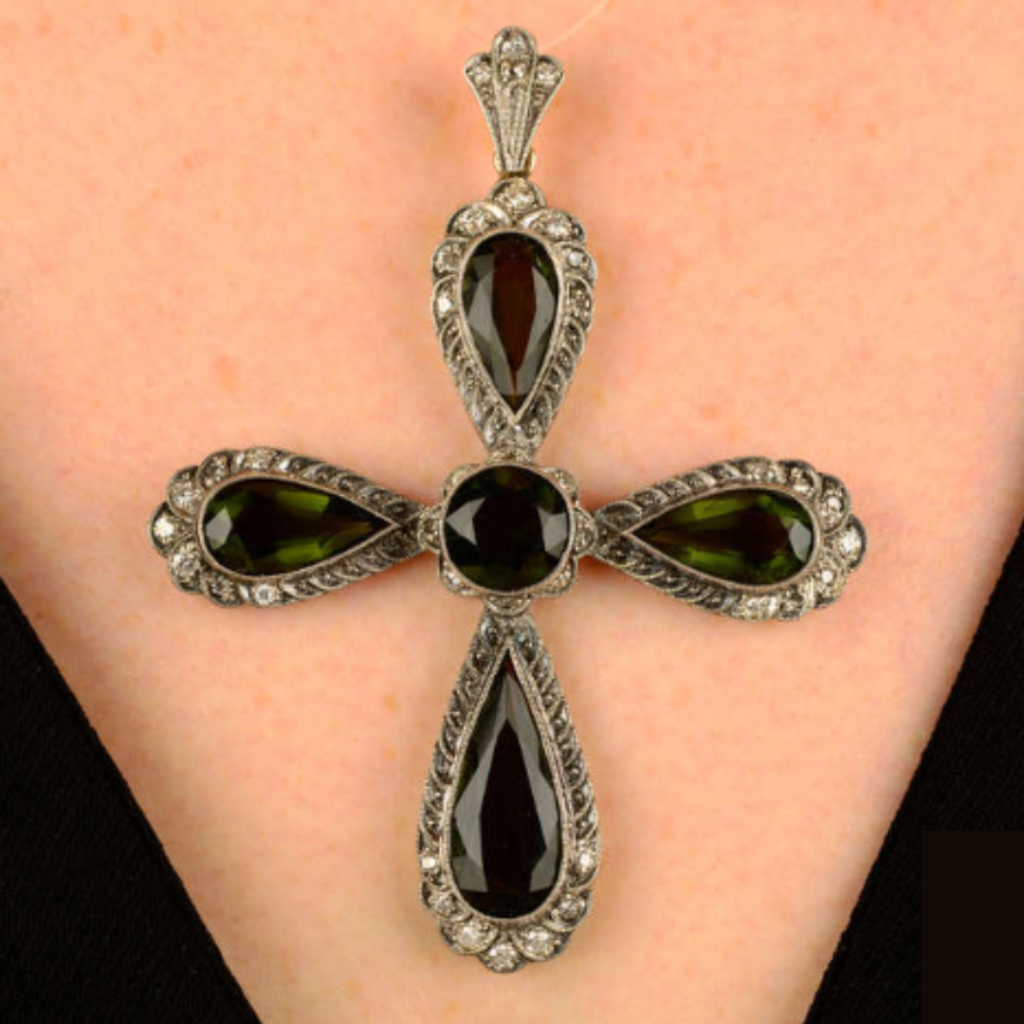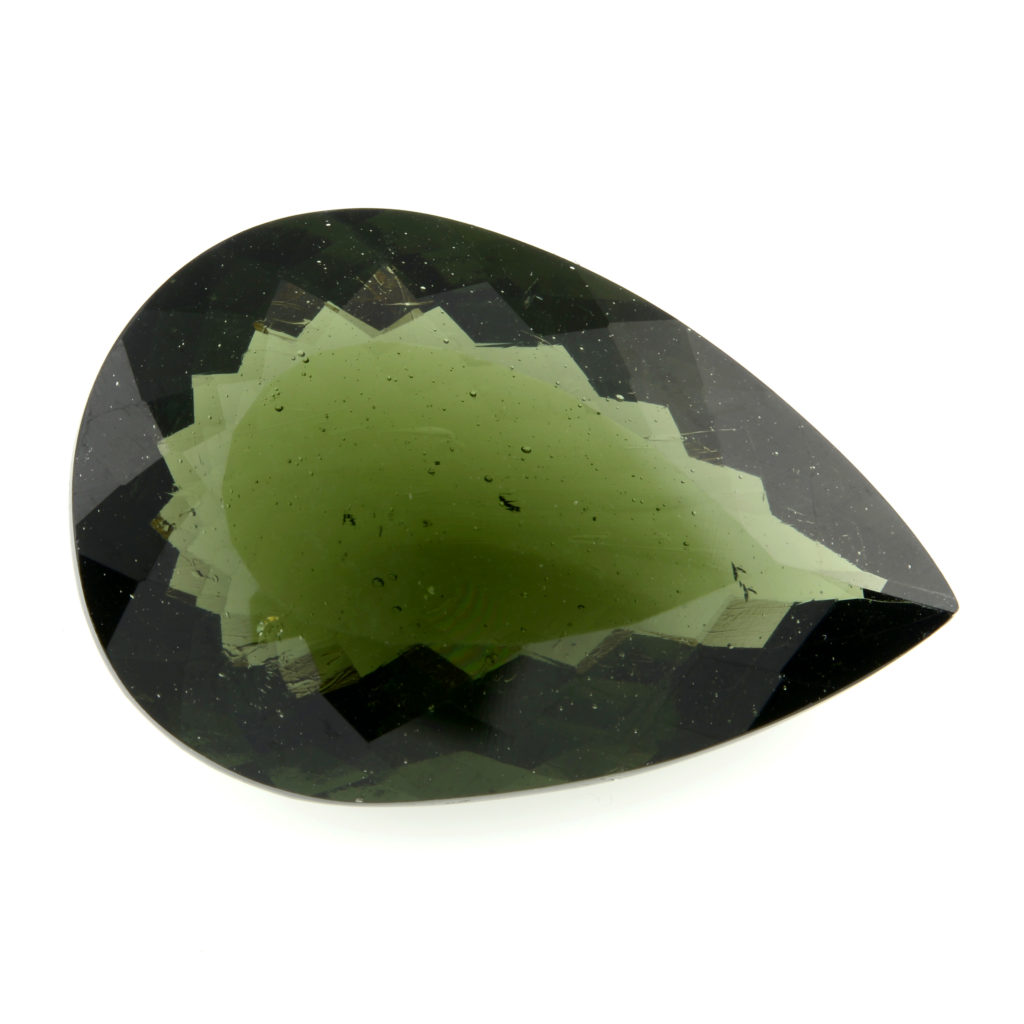Moldavite is a type of natural glass, more specifically, impact glass. It formed millions of years ago by the melting and cooling of rocks surrounding the location where meteorites impacted Earth.
Originally, the name moldavite only identified the material coming from a specific site in Southern Germany, the Nördlinger Ries crater, where a meteorite impacted almost 15 million years ago.
However, this is not the case today and moldavite is found in various locations.
Moldavite has a distinguishing rich green to greenish-brown colour and typical inclusions due to its formation.
Uses of Moldavite
Humankind has used natural glass for thousands of years in the form of tools and ornaments,
including in jewellery.
Moldavite from sites close to the Nördlinger Ries crater is also known as 'Bohemian moldavite' and was found in pre-historic artefacts thousands of miles from its geographical origin, proving that this material has been appreciated and traded for a long time.
A surge of interest in this stone characterises Czech jewellery pieces from the 1850s, a few examples are displayed at the Museum of Decorative Arts in Prague. Interestingly, recent testing on these pieces has proven that green glass has been used to imitate genuine moldavite since the 19th century.
Moldavite Formation
Tektite is the family name for the natural glass that formed when meteorites impacted Earth on silica-rich soil. The force of the impact caused the molten soil and rocks on Earth's surface to be ejected into the atmosphere and subsequently fall back down on Earth. When re-entering the atmosphere, the cooling down process started and the tektites were shaped.
The final impact on the Earth's surface further moulded their appearance, especially in the case of moldavite, where the presence of water on the Earth's surface caused the etches typically visible on rough specimens.
Typical inclusions such as elongated gas bubbles, a wavy appearance, swirls, grains and long wires of lechatelierite* make moldavite's identification easier. However, as for every popular gemstone, imitations are very common and their quality is increasing.
Because of the formation process, large examples of moldavites are rare, especially faceted moldavite. In our Gemstone auction on 23 October, a beautiful intense green example of pear- shape moldavite, weighing 20.94ct can be admired.
*Amorphous silica glass
Gemstones | Friday 13th December 2024
Viewing times (ID required):
Birmingham
Thursday 12th December 10:00-16:00
Virtual viewings are available by request. Virtual viewings are the ultimate personal shopping experience. Using Zoom, you can ask us whatever you need to know to buy with confidence. Find out more
Valuations
Our valuations are free, with no obligation to sell with us. Our experts will value your item with an estimate, so you can find out what it could achieve at auction.
The process is simple. You can fill in a form online. Or book an appointment to visit either of our offices in Birmingham or London. Virtual valuation appointments are also available.
Find what you're looking for
Make sure you don’t miss finding that special something by signing up to our email alerts. You’ll be the first to know when catalogues become available, receive invitations to special events and preview the hottest lots from our auctions, plus much more.
Why not use our free personal shopping service? Sign up for lot alerts and tell us exactly what you are looking for. Each time we upload a catalogue, we search for your keywords and email you lots matching your interests. Your personalised email will include images, lot descriptions and auction details.














